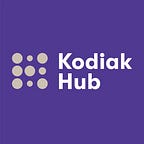Can Machine Learning shape the future of Supply Chain Optimization?
Have you ever wondered how Netflix knows exactly what kind of TV series you want to watch, or how Facebook recommends all the right people to send friend requests to, or how Google Doc’s search bar randomly pops up with the document you were going to search; before you even typed anything?
If any of these three parameters match an experience in your digital life, chances are you’re a user of a program that utilizes complex Machine Learning and algorithms to put the right content, onto your screen, in front of your eyes.
Creepy… Maybe.
Innovative… Absolutely.
“Machine learning refers to the changes in systems that perform tasks associated with artificial intelligence. These tasks involve recognition, diagnosis, planning, robot control, prediction, etc. Machine Learning is coming into its own, with a growing recognition that machine learning plays a key role in a wide range of critical applications, such as data mining, natural language processing, image recognition, and expert systems” (Tiwari 2017).
Machine Learning, and its implementation into expert systems, has just begun its journey. The capabilities for dynamic and diverse usages of machine learning are really quite baffling.
I plan on scratching the surface and focusing on one of the means of usage, where machine learning’s complex algorithms can create transformative action. The topic I would like to focus in on is the usage of machine learning in optimizing B2B operations, but more specifically supply chain operations.
Passive to Active
“[Machine learning] uses algorithms to help businesses turn large volumes of passive data into useful business information” (cips.org 2015).
Today’s global supply chains gather incredible amounts of big data during day-to-day functionality. Data collection and inspection is becoming a necessary task for leading procurement professionals. Learning from current operational hiccups and/or successes allows category managers, quality professionals and sourcing directors alike to operationalize well formulated strategies, based on studied big data.
But…
What if this big data wasn’t just a passive collection, but rather an active one?
Supply Chain professionals are constantly under the magnifying glass of corporate management. The demand on accurate forecasting of risk points and win points, to grow the overall value chain, is incredibly important for businesses functioning in large-visible global supply chains.
With the help of machine learning, data wouldn’t need to be inspected to drive forecasting, the data would forecast itself. Data storage becomes data creation and more data = more intelligible analytics for the use of procurement pros.
Predictive analytics are one of the most effective tools for evaluating and managing supply chain risks, and that’s what makes the capabilities of machine learning so exciting.
Transforming traditional Supply Chain Management tools
Traditional supply chain management and procurement functionalities have seen major shifts in the last 20 years.
Corporate focuses shifted, technology shifted and somewhere along the way, supply chain functionalities went digital. Transparency and sustainability became a concern, management systems became more complex and this has required top-to-bottom reshaping of many supply chains, globally. Those who have survived the shifting tides, are also those who decided to embrace the disruptions of technology and innovation rather than patronizing its presence.
Machine learning could soon impact this continuous shifting paradigm.
Traditional supply chain management’s process has been to develop as many intelligible tools as possible that could predict and forecast uncertainty and risk; this is true from logistics and transportation, warehouse management, inventory management, supplier relationship management, and so forth. The forecasts and predictions became an input and subsequent strategies and actions would be put into place after closer inspection of the tools’ gathered data.
But what if this two-step process could be one…
“Based on learning from the past, a “best” relationship can be identified, which will generate decisions, as future uncertainty is resolved, that are better than the decisions derived from the traditional two-step approach of first forecast and then optimize” (hbr.org).
Supplier Relationship Management
When you hear of Machine Learning being utilized in business functionalities, many people’s minds snap directly to B2C:
Companies, using Machine Learning, to better understand the daily actions of a consumer, seasonal trends, product indications, demand for new products, and then adapting to that consumer in order to sell them a product or service. These B2C companies know inventory will stay in balance thanks to Machine Learning, which drives their MEIO (Multi-Echelon Inventory Optimization) so they can take their sweet old time; gathering data on a consumer, putting directed content in front of them, and ultimately closing the sale (Canitz 2016).
What if this same kind of Machine Learning was applied to Supplier Relationship Management in B2B operations?
The answer: It will happen, and that reality may be much closer than we believe.
Supplier data compilation is an important step in the proper functionality of Supplier Relationship Management. In that regard, much of this data is qualitative data (assessments, audits and evalutions etc.). But with the help of Machine Learning and intelligible algorithms this passive data gathering could be made active.
Suppliers’ every action would be compiled over long periods of time, and not for the inspection of procurement professionals to decide if the relationship is mutually beneficial. Supplier selection would be more predictive and intelligible than ever before; creating a platform for success from the very first collaborations. All of this information would be easily available for human inspections but generated through computer automation; providing multiple best supplier scenarios based on whatever parameters, in which, a procurement professional desires.
While much of this is a vision for the future of supply chain management, it’s actualization doesn’t lie all that far away chronologically.
Supply Chain Innovation. Is there really anything more exciting?
Until next week.
This publication is brought to you by author Sam Jenks, but also on part by Kodiak Rating — A Supplier Relationship Management SaaS functioning out of Stockholm, Sweden. Kodiak Community intends to challenge traditional business practices with innovative thinking and creation.
